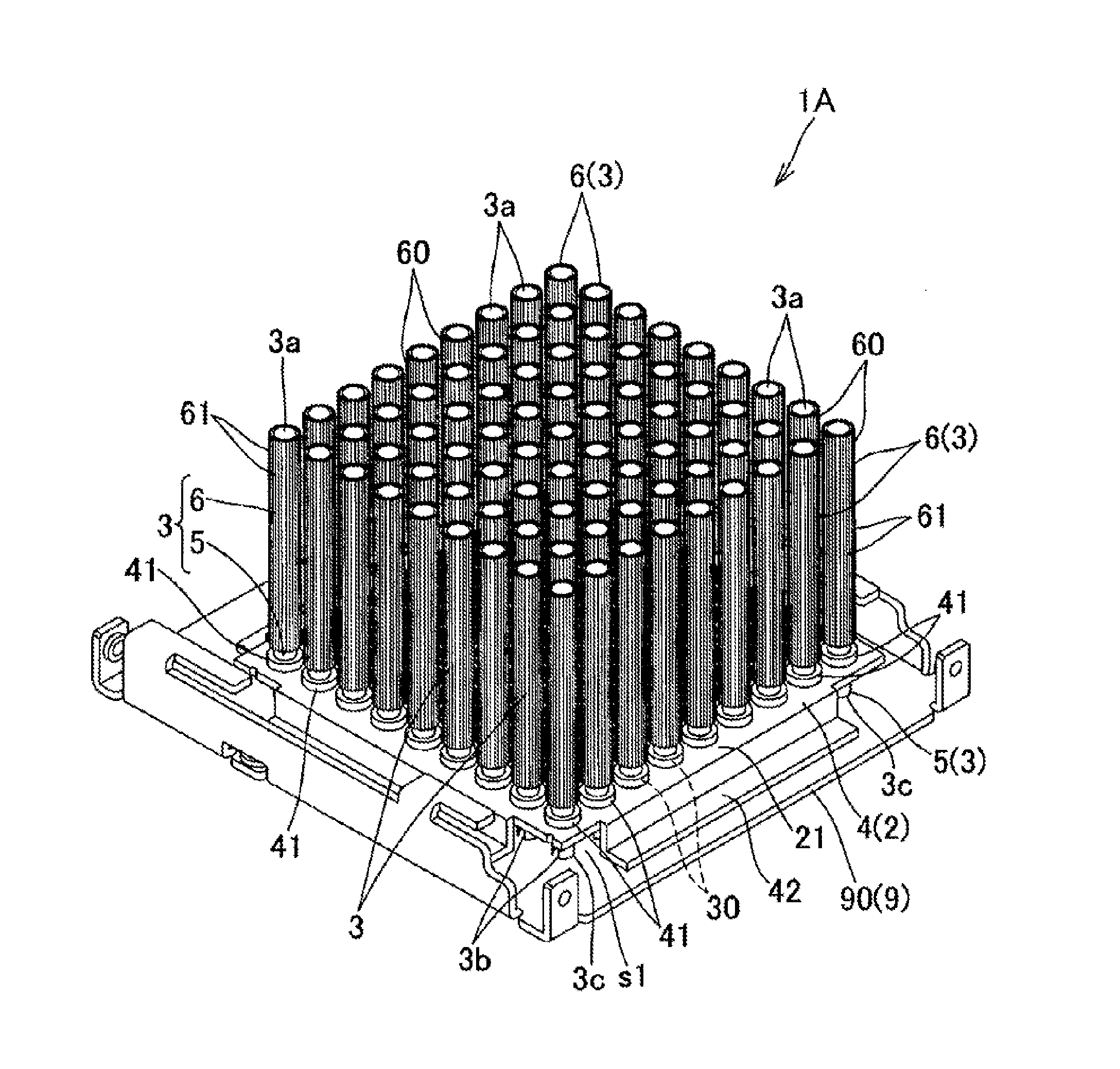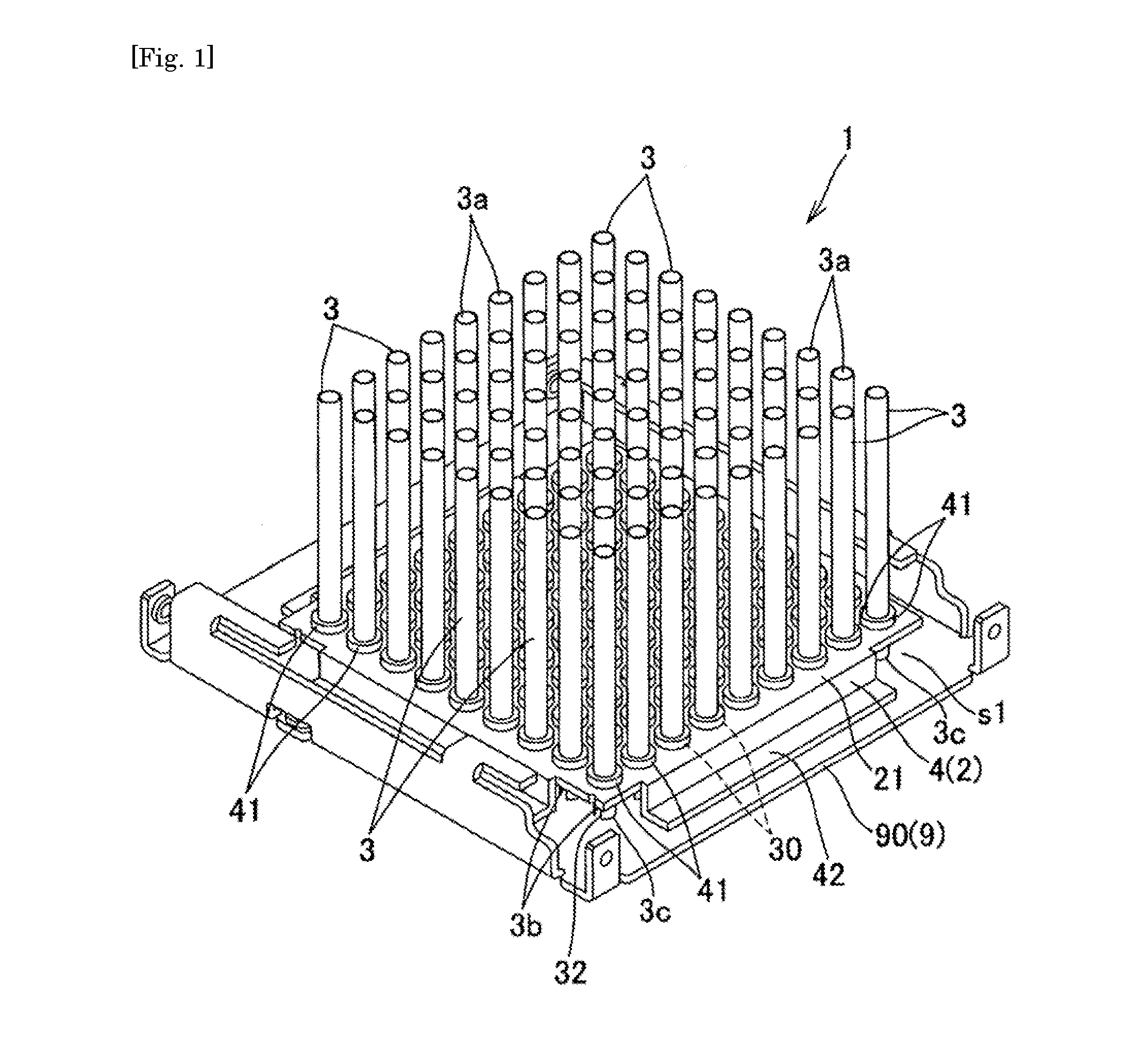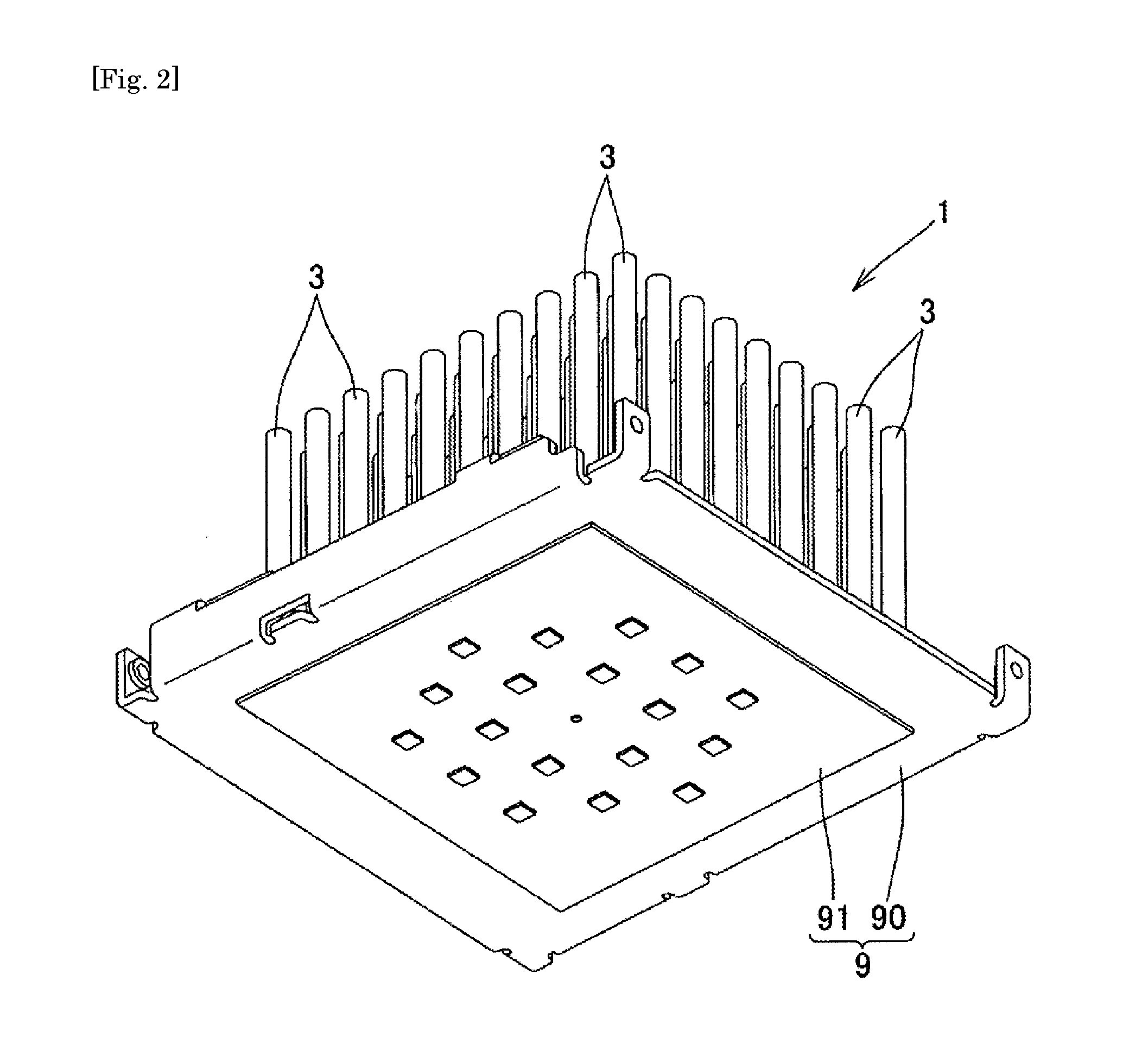Heat sink
a technology of heat sink and cylindrical body, which is applied in the direction of indirect heat exchangers, lighting and heating apparatus, and semiconductor/solid-state device details. it can solve the problems of reducing reducing the heat absorption performance of the cooling target object, and reducing the degree of design freedom, excellent heat dissipation effect, and improving the strength of the supporting fin
- Summary
- Abstract
- Description
- Claims
- Application Information
AI Technical Summary
Benefits of technology
Problems solved by technology
Method used
Image
Examples
first embodiment
[0038]First, the invention will be described with reference to FIG. 1, FIG. 2, FIG. 3, FIG. 4 and FIG. 5.
[0039]As illustrated in FIG. 1, FIG. 2 and FIG. 3, a heat sink 1 in the embodiment includes a supporting main body 2 made of a material having excellent heat conductivity and one or a plurality of cylindrical body(ies) 3 that is(are) provided on the supporting main body 2 in a standing manner and is(are) made of a material having excellent heat conductivity. The supporting main body 2 is fixed to a cooling target object 9 with a gap s1 ensured therebetween. As the materials of the supporting main body 2 and the cylindrical body 3, which have excellent heat conductivity, metal materials such as aluminum, copper, and iron are preferable, for example.
[0040]The cooling target object 9 includes an LED substrate 91 configuring the LED lighting device and a housing plate 90 made of metal to which the LED substrate 91 is attached in this example. The supporting main body 2 is fixed to th...
second embodiment
[0049]Next, the invention will be described with reference to FIG. 6, FIG. 7, FIG. 8(a) and FIG. 8(b).
[0050]As illustrated in FIG. 6, FIG. 7, FIG. 8(a) and FIG. 8(b), in a heat sink 1A in the embodiment, each cylindrical body 3 is configured by coupling equal to or more than two cylinders including a cylinder 5 at the base end side, which has the through-hole 3b and is fixed to the supporting main body 2, and a cylinder 6 at the front end side, which has the opening 3a on the front end, to each other in the axial direction in a state where inner spaces of the cylinders communicate with each other. With this coupling configuration, the cylinders can have configurations in accordance with respective positions thereof while materials and structures of the cylinders are made different.
[0051]In the embodiment, the outer diameters of the cylinders 5 at the base end side, which are fixed to the supporting main body 2 (supporting plate 4), are set to be smaller than the outer diameters of t...
third embodiment
[0059]Next, the invention will be described with reference to FIG. 9, FIG. 10, FIG. 11, FIG. 12(a), FIG. 12(b) and FIG. 13.
[0060]As illustrated in FIG. 9, FIG. 10 and FIG. 11, in a heat sink 1B in the embodiment, the supporting main body 2 is fixed to the cooling target object 9 in a close contact state with no gap therebetween. To be specific, the surface of the supporting plate 4 as the supporting main body 2 to which the cylindrical bodies 3 are fixed at the opposite side to the surface thereof on which the cylindrical bodies 3 are provided in the standing manner is fixed to the housing plate 90 as the cooling target object 9 in a surface contact state. With this, heat transferred from the LED substrate 91 to the housing plate 90 efficiently moves to the supporting plate 4 so as to be efficiently dissipated through the surface of the supporting plate 4 and the cylindrical bodies 3 as will be described later.
[0061]In the same manner as in the second embodiment, each the cylindrica...
PUM
 Login to View More
Login to View More Abstract
Description
Claims
Application Information
 Login to View More
Login to View More - R&D
- Intellectual Property
- Life Sciences
- Materials
- Tech Scout
- Unparalleled Data Quality
- Higher Quality Content
- 60% Fewer Hallucinations
Browse by: Latest US Patents, China's latest patents, Technical Efficacy Thesaurus, Application Domain, Technology Topic, Popular Technical Reports.
© 2025 PatSnap. All rights reserved.Legal|Privacy policy|Modern Slavery Act Transparency Statement|Sitemap|About US| Contact US: help@patsnap.com



